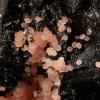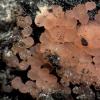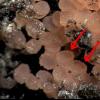
09-01-2026 17:41
Arnold BüschlenHallo, F. dilatata wird von vielen Bryoparasiten

10-01-2026 20:00
Tom SchrierHi all,We found picnidia on Protoparmeliopsis mur

07-01-2026 22:22
 Danny Newman
Danny Newman
Tatraea sp. on indet. hardwood The Swag, Great Sm

10-01-2026 01:18
 Danny Newman
Danny Newman
cf. Neovaginatispora fuckelii on indet. shrub Pre

07-01-2026 10:24
 Danny Newman
Danny Newman
Pezicula sp. on indet. hardwood Appalachian Highl

09-01-2026 10:08
 Blasco Rafael
Blasco Rafael
Hola, en el mismo habitat que la anteriorRetamaDia

08-01-2026 21:22
 Blasco Rafael
Blasco Rafael
Hola, He recogido esta muestra de Orbilia sobre Re

07-01-2026 17:29
 Marc Detollenaere
Marc Detollenaere
Dear Forum,On a barkless Populus I found some smal

10-11-2021 17:33
 Riet van Oosten
Riet van Oosten
Add-on topic http://www.ascofrance.com/forum/7059

07-01-2026 10:05
 Danny Newman
Danny Newman
cf. Chaetospermum on XylariaCosby Campground, Grea
I have received the data and images for two separate collections of Pyronema. There seems to be conflict in the literature about the separation of P. domesticum and P. omphalodes. Spore sizes, coalescence of fruit bodies and the presence or absence of marginal hairs appear to be variously stated in the literature.
I wonder if anyone has previously looked at Pyronema species and would be able to advise, please.
The data and images for one of the collections are below:
The following relates to the collection at Woodnook Vale, Accrington, Lancs. 11/08/2013:
Spore sizes: Mycologist 1 sees an average of 16.7 x 11.1 ?m over 30 spores. Mycologist 2 sees an average 15.0 x 9.1 ?m over 10 spores ranging 13.8-16.5 x 8.6-10.5 ?m with none found outside that range except a single spore 19.8 x 12.9 ?m which is clearly abnormal.
Hairs: No setae found in the squash, and the slight roughnesses in Mikes photos seem not to be setae as M&K illustrate.
Coalescence: Mike's photos of fresh material show clearly defined cup apothecia. So was my collection but I allowed it to air dry and it has coalesced to an amorphous mass where the cups are no longer defined. This would happen in nature.
Distribution: Mike notes that the material was quite randomly scattered, some thinly, some quite congested, from an overall area of about 300mm square.
Thank you,
With Best Wishes,
Peter.
Ce qu'il faut retenir pour :
P. omphalodes = apothécies grégaires, souvent comfluentes, par de très nombreuses apothécies, sans poils. Ascopores inférieures à 10 µm de large
P domesticum = Apothécie grégaires, rarement avec quelques apothécies confluentes, poils distincts, surtout à la marge, 100-250 µm long. Ascopores pouvant dépasser 10 µm de large.
Cordialement
René
Thank you for your reply.
If P. domesticum has distinct hairs from 100um at the margin, then I must have been sent images and descriptions of the hairless P. omphalodes.
Although some of the spores have been measured at 11.0um, this could be down to the preparation of the sample for microscopy.
I will inform the mycologists who asked me the question.
With Best Wishes,
Peter.

In my opinion, your collection has to be named Pyronema domesticum. On your photographs, we can see clearly some apothecia with distinct marginal hairs (see attached picture). Try to isolate such apothecia and make a new mount, I'm sure you will see those hairs ;)
Oui, sans doute as-tu raison Nicolas,
Je voudrais encore ajouter qu’il ne faut pas confondre des apothécies accolées, même fortement, mais demeurant individualisées, comme le montre la photo, avec des apothécies confluentes, soit réunies, fusionnées, formant ainsi une entité « nouvelle ».
Cordialement à tous
René
Thank you for your help with the identification of the Pyronema domesticum sample.
I see the marginal hairs, which you have pointed out in the photo.
The images and data were sent to me, rather than being one of my own samples, so I did not have the chance to do microscopy.
With Best Wishes,
Peter.


